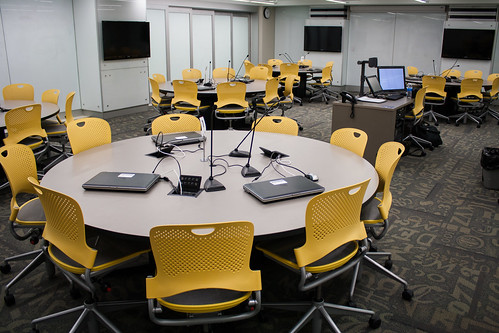 |
| CC BY Some rights reserved by David Röthler |
To test this, my colleague, David Röthler, and I ran an experimental outdoor webinar last week, Let's go beyond - extending the webinar, as part of a two-day Webinar Festival run by the Norwegian university NTNU. Here's our abstract for the webinar.
Webinars are becoming an increasingly popular arena for education, primarily in the form of online presentations to distributed audiences or in workshop-like settings. Web conferences erase the barriers of geography and make it easy for anyone to join a virtual meeting from anywhere. However, the webinar experience can be extended significantly if further hardware and software are applied. We can add new perspectives using mobile devices and remote cameras enabling live transmission from field trips and even aerial coverage from drones. This presentation will show and discuss new opportunities for extending the affordances of a webinar using a number of innovative solutions.
I moderated from an indoor studio but David was out in his garden just outside Salzburg and thankfully the November weather in Austria was mild and sunny. This allowed him to demonstrate using different cameras, one or which I was able to control from my laptop in Sweden. One device called Swivl is worth noting since it allows you to mount a mobile or tablet as a camera and will follow whoever has the small microphone that is connected wirelessly. This means that the camera will move from one speaker to another in a discussion but can also give the presenter the freedom to move around, in this case a tour of the garden. It could also be used to move around a room at a museum or show interesting features of a building or historical site.
If you want to take the camera with you on a tour then a gimbal is a useful handheld device that keeps the camera stable while you are walking or even running. However to take the webinar to new dimensions we demonstrated using a drone to show views of the Salzburg suburbs and surrounding countryside. Participants quickly saw educational applications for this that included fields like town planning, archaeology, geography, geology and history. Participant's ideas are shown below.
For this webinar we "cheated" just a little in that David had a wired internet connection from the house to his desk in the garden. This was to ensure that everything worked as we wanted. However if you can make sure you have a good 4G mobile connection or a stable wifi connection then you can start taking webinars outdoors and give participants perspectives that would otherwise be impossible. Virtual field trips can be arranged or, better still, let the participants join via their mobiles and show their locations. Of course, this is not realistic for everyone since wireless internet is still very limited in many areas but why not start experimenting now (reminding the participants not to expect everything to work smoothly)?
Below you can watch the recording of our webinar.
